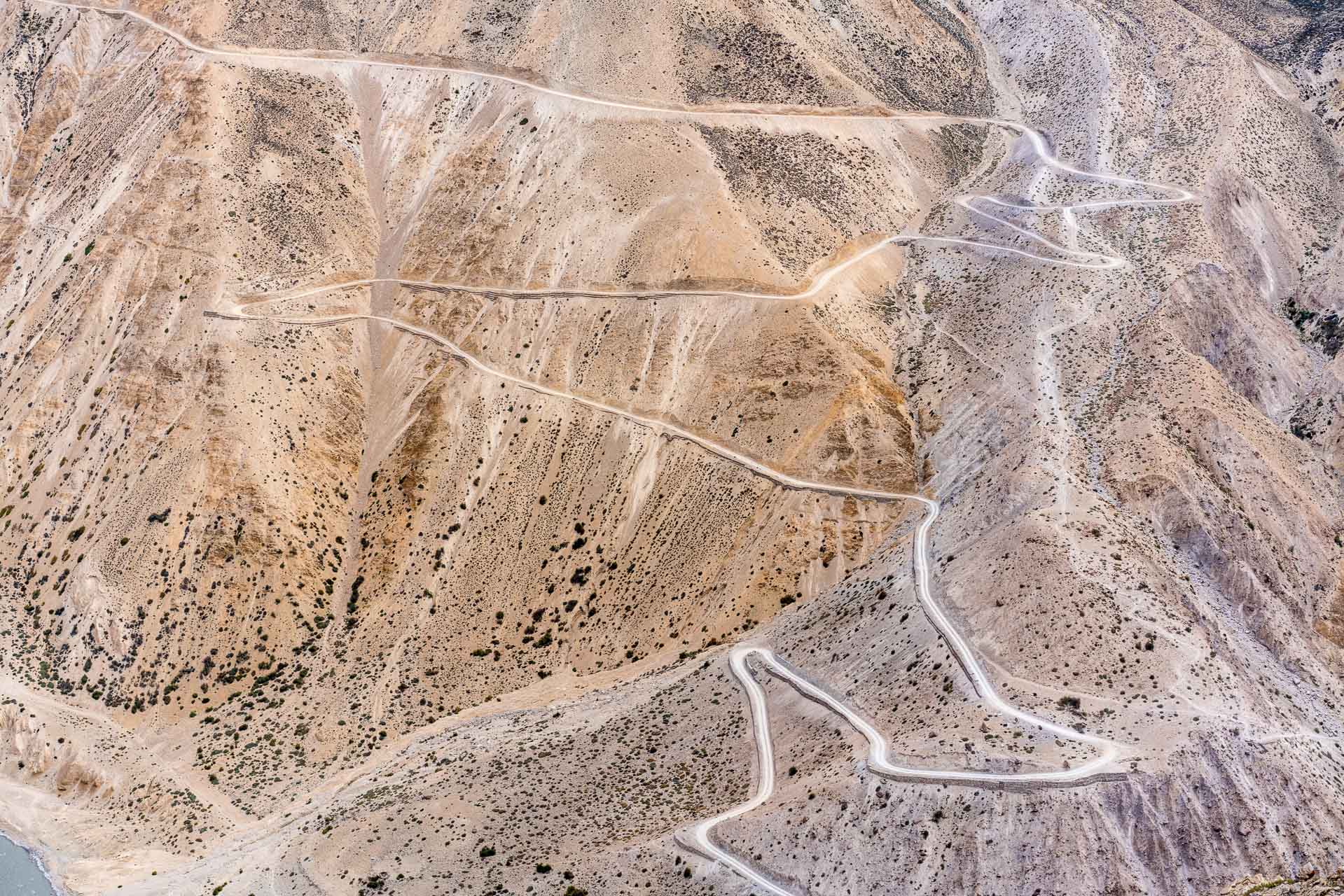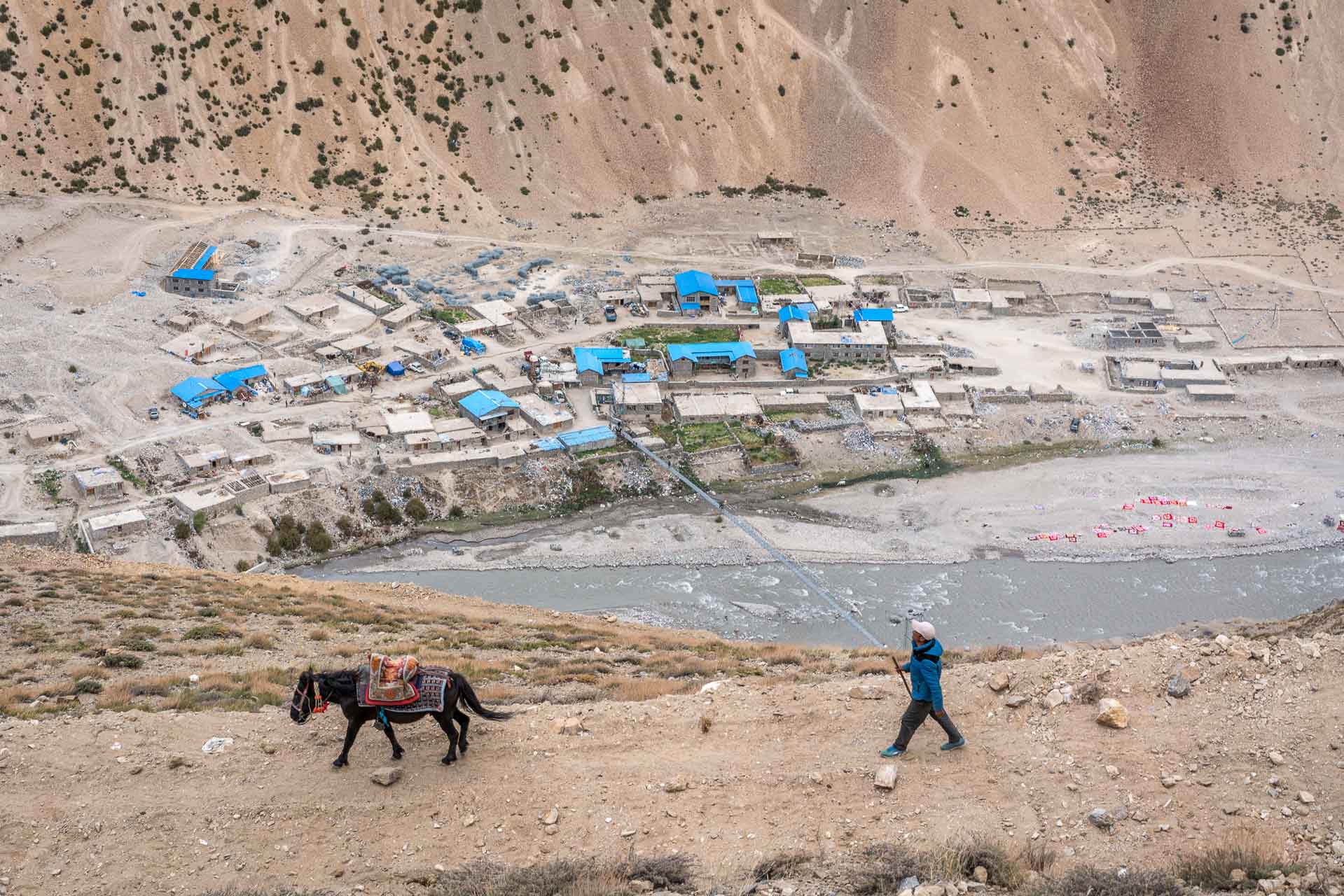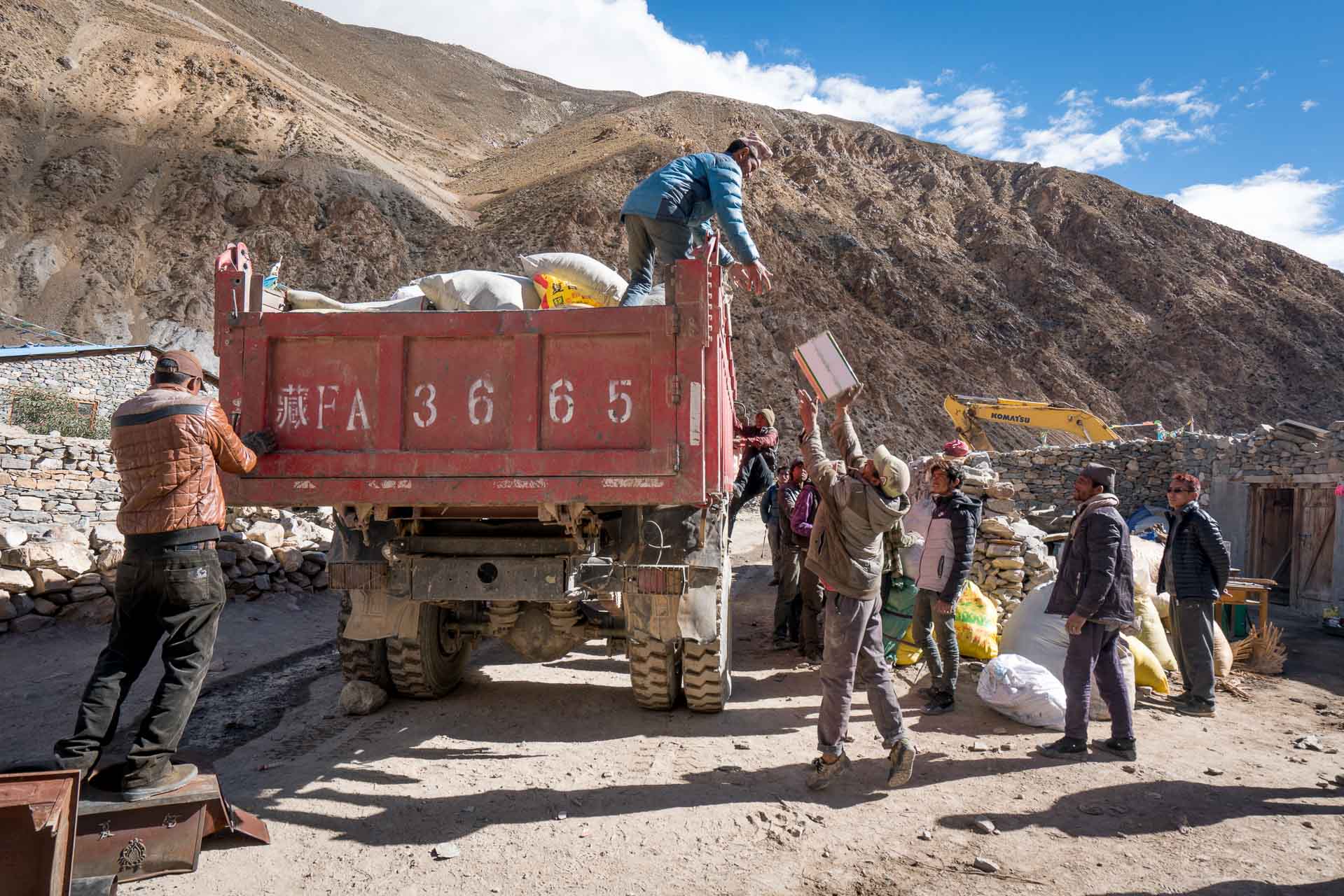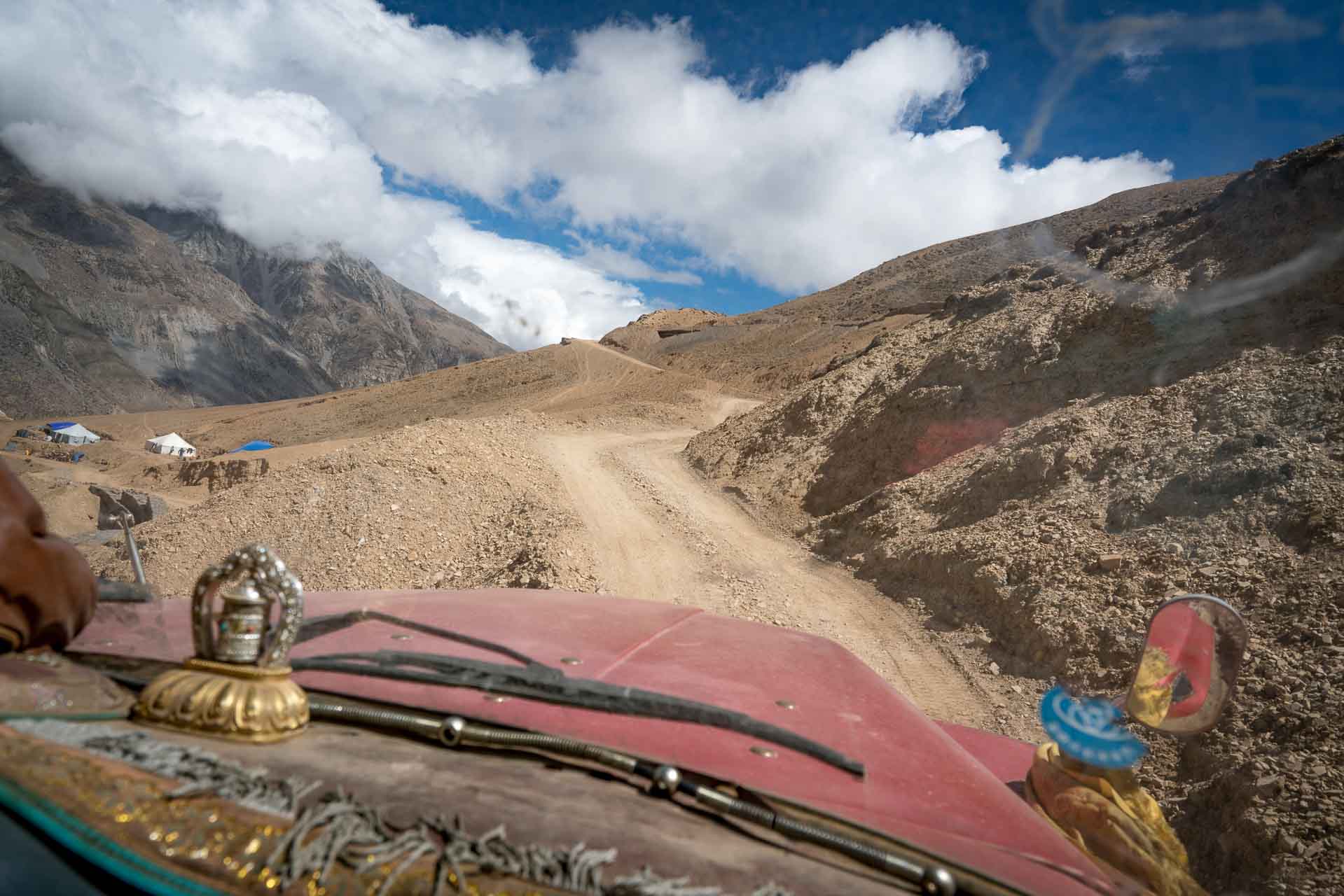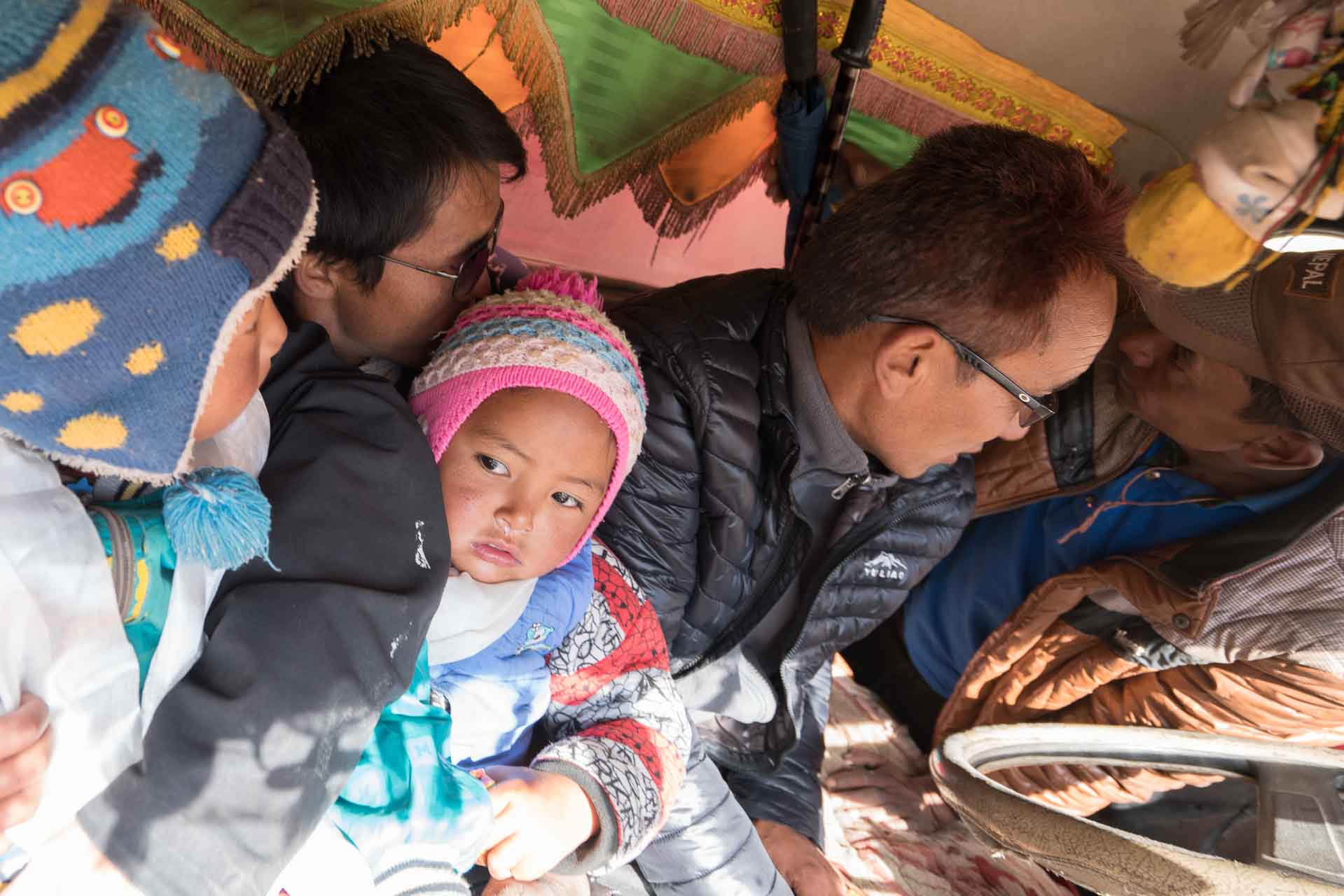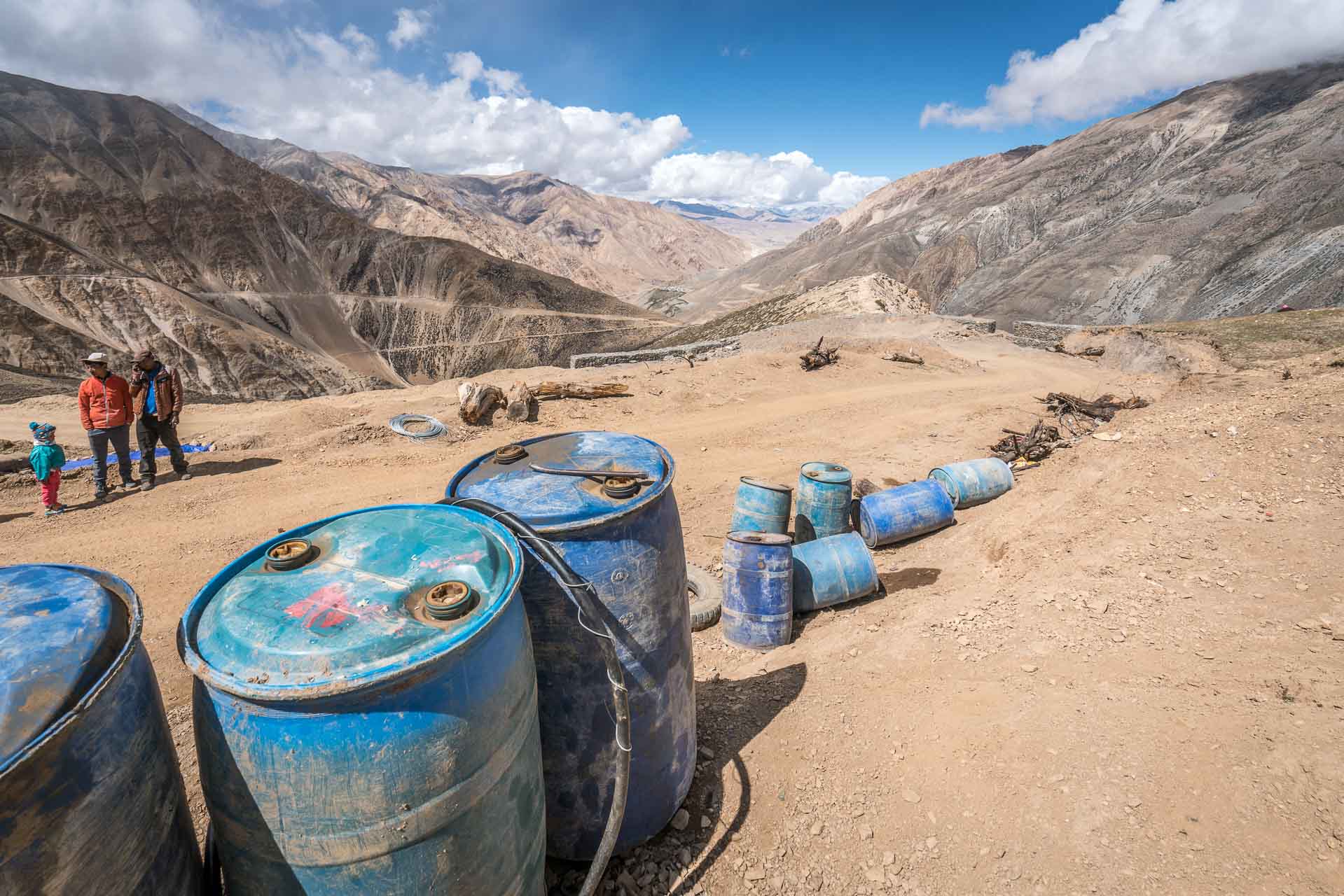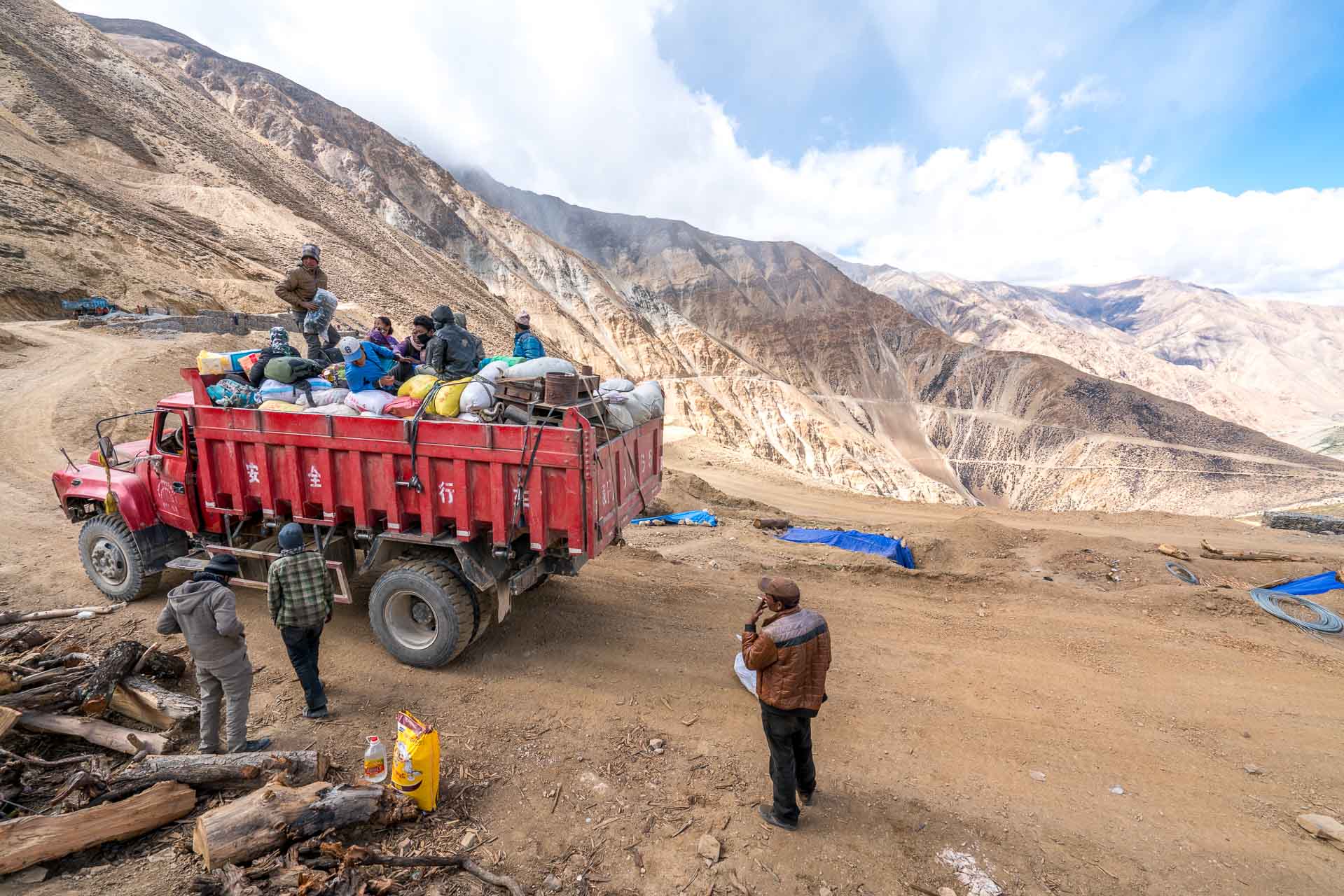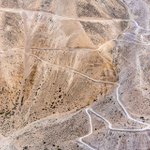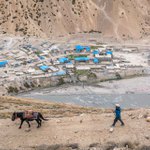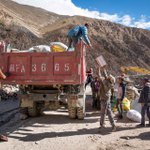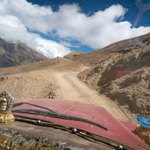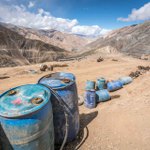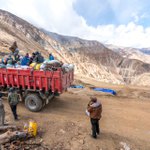Red, Blue, Brown
Looking down on Hilsa, the border settlement between Tibet and Nepal, blue Chinese tin roofs covering half the houses and red carpets drying in the sun dot the brown and barren landscape. The road, which had just opened when I visited the place four years earlier, has been upgraded and is now a neat line winding up the steep flanks towards the Nara Pass and the valleys of Humla, Nepal.
It is late summer 2016 and Hilsa is bustling with activity: Indian pilgrims coming back from Mount Kailash and waiting for their helicopter flight, their guides eager to get home in time for the main Hindu festival season, and traders bringing daily supplies mingle on the dusty street. A red Chinese Dong Feng truck arrives and a crowd gathers, hoping to get transport to bring them and their goods across the pass. Blue plastic oil barrels holding fuel smuggled across from China stand in the sun, their colour matching the tin roofs and the blue skies. The only sparks of yellow in between are a few wheat flour bags and the old Komatsu excavator I followed in 2012 – weathered but still functioning.
I score a seat in the truck cabin together with three other men, two children, and the driver. Half way up to the pass, we stop at the road construction camp of an old acquaintance – Mangal. He was one of the pioneers behind the privately initiated Limi road nearby and has since become a government contractor.
In the camp, overlooking the valley that leads to Tibet, the combination of colours strikes me again. What is it with blue and red against the barren brown of the Tibetan Plateau? How come that the sturdy Chinese Dong Feng trucks are always either blue or red – the same red as monk robes and monasteries? Why blue tin and blue barrels? I don't know. But the contrast of brown, blue and red is omnipresent in these highland deserts.
Privacy Policy
Plain and simple: I take the principle of minimal data collection serious and try hard not to collect or process any personal data beyond the basics required to serve and maintain the website.
Specifically,
- We do not use cookies.
- We do not use third party analytics.
- There is no contact form that would allow you to enter personal data.
- We do not use advertising to run this website.
In order to serve this website, your IP address and information about your browser, operating system and screen resolution need to be collected and processed. theotherimage.com is a simple, handcrafted, static website hosted by Netlify. It uses fonts by Adobe Fonts (formerly Typekit). Both Netlify and Adobe automatically collect usage data, either generated by the use of this website or from the service infrastructure itself. This data is used for accounting and analytic purposes as well as for technical maintenance by these two companies. Neither Netlify nor Adobe use cookies to track you. Specifics can be found in their respective privacy policies.
The videos on this website are hosted by Vimeo. Depending on your browser configuration, Vimeo may use cookies and other tracking technologies as stated in their respective privacy policies.
If you have any questions about this privacy policy, please write to: Martin Saxer, LMU Munich, Department of Social and Cultural Anthropology, Oettingenstr. 67, 80538 Munich, Germany.
This privacy policy has been updated on 30 December 2018.
![[ the other image ]](/images/logo/toi-logo_2x.png)
